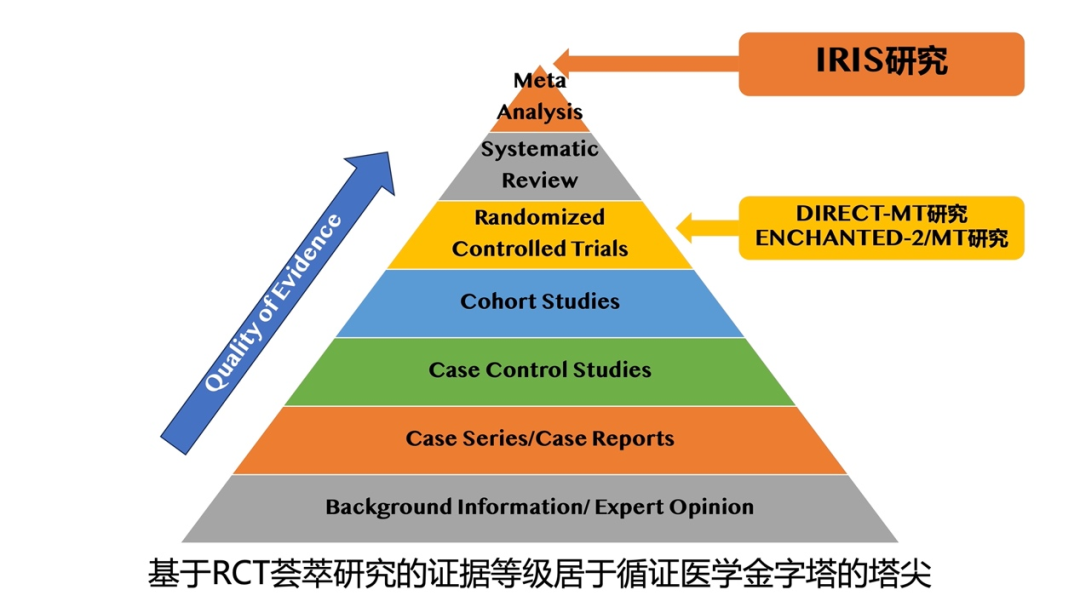Recently, the Cross Functional Team of the Oriental Pan-Vascular Devices Innovation College, in collaboration with multiple research teams around the world, has published the latest achievement online in the top clinical medical journal "The Lancet", contributing to stroke clinical practice, enlarge international impacts of Chinese scholars’ treatment of cerebrovascular disease. Researchers from USST Oriental Pan-Vascular Devices Innovation College were the first authors and coordinated corresponding authors of the paper.
Over the past few years, with the deepening conduct of clinical research, arterial thrombectomy has been considered the most effective treatment for acute ischemic stroke caused by anterior circulation occlusion. This method significantly improves the clinical outcomes of patients and reduces residual symptoms, but there has been international controversy over the need for intravenous thrombolysis (IVT) before arterial thrombectomy (EVT), as intravenous thrombolysis may increase the risk of bleeding, delay thrombectomy time, and increase treatment costs. Therefore, researchers around the world are launching high-quality clinical research to address this issue. So far, six high-quality clinical studies on this issue have been published in internationally renowned journals worldwide. However, due to differences in design, enrollment numbers, study population, and baseline data among these studies, the results of the six studies were not consistent. Therefore, there is an urgent need for comprehensive analysis of individual data based on high-quality randomized controlled trials (RCTs) to obtain higher-level evidence-based medical evidence, which will help guide global stroke treatment practices.
Based on this, the Cross Functional Team of Oriental Pan-Vascular Devices Innovation College, together with experts from the Netherlands, Switzerland and other countries, jointly conducted a study on improving acute ischemic stroke reperfusion strategies in six randomized controlled trials. This study adopted a non-inferior test design and determined the most recognized non-inferior threshold through extensive research by relevant global societies. Eventually, 2314 patients from 207 research centers in 8 countries, including China, Netherland, Switzerland, Australia, New Zealand, Japan, Canada, and Vietnam, were included.
The research indicates that based on the non-inferior margin of 5%, it was not confirmed that direct thrombectomy was not inferior to bridging thrombectomy; At the same time, it is particularly noteworthy that this study has not confirmed that bridging therapy is superior to direct thrombectomy. There is a little difference between the two treatments, with 1.7% patients facing different outcomes. This means that for patients who can have arterial thrombectomy and intravenous thrombolysis treatment, for every 57 patients treated with bridging therapy, it is possible for every patient to gain additional benefits compared to simple arterial thrombectomy. We should make individual and precise decisions in such aspects as cost-effectiveness, patient characteristics, and expected delays, and relevant subgroup research work is being closely analyzed.
The release of this achievement not only represents a significant breakthrough in the field of cerebrovascular disease treatment by the Cross Functional Team of the Oriental Pan-Vascular Devices Innovation College, but also a new starting point for medical-engineering interdisciplinary research. The Oriental Pan-Vascular Devices Innovation College has rich resources and geographical advantages, and has gathered numerous outstanding academic talents, which will become a strong driving force for future research and innovation. This achievement will attract more scholars and interdisciplinary experts to join, explore and make innovations together, promote the leapfrog improvement of medical treatment level, and provide patients with more hopes for rebirth.




